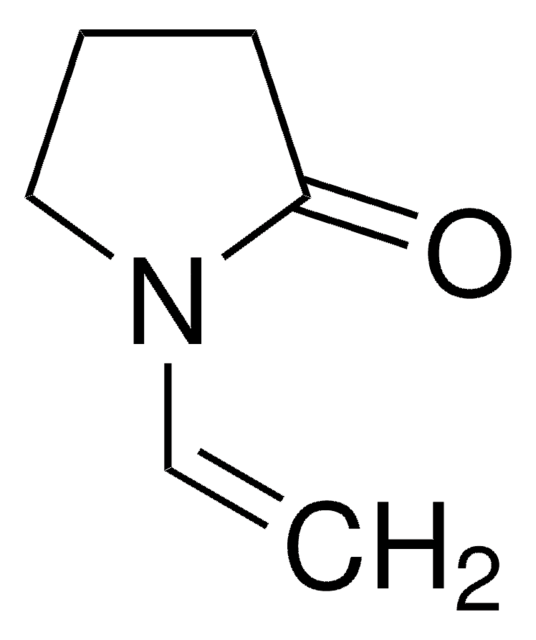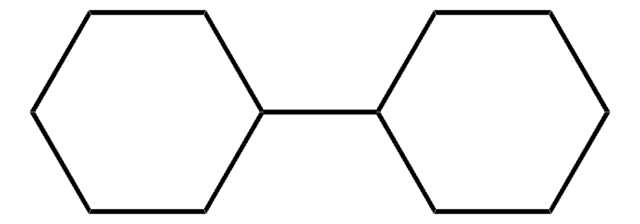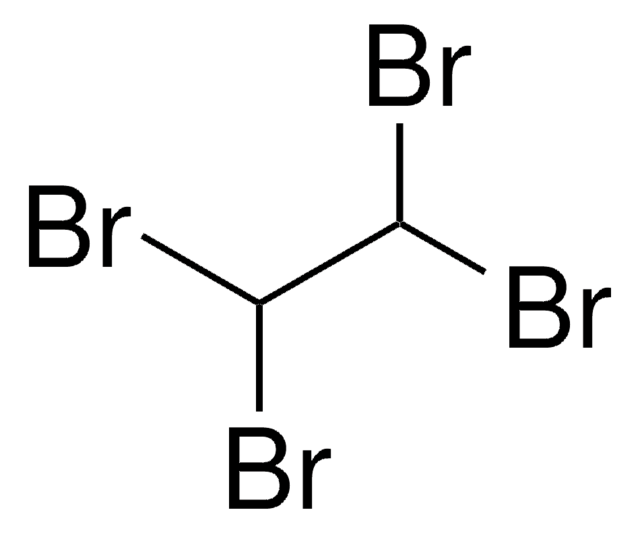94950
4-Vinyl-1-cyclohexene
analytical standard
Synonim(y):
4-Ethenyl-1-cyclohexene, NSC 15760
About This Item
Polecane produkty
klasa czystości
analytical standard
Poziom jakości
gęstość pary
3.76 (vs air)
ciśnienie pary
10.2 mmHg ( 25 °C)
Próba
≥99.5% (GC)
temp. samozapłonu
517 °F
okres trwałości
limited shelf life, expiry date on the label
metody
HPLC: suitable
gas chromatography (GC): suitable
współczynnik refrakcji
n20/D 1.463 (lit.)
n20/D 1.464
tw
126-127 °C (lit.)
mp
−101 °C (lit.)
gęstość
0.831 g/mL at 20 °C
0.831 g/mL at 20 °C
0.832 g/mL at 25 °C (lit.)
Zastosowanie
environmental
petroleum
format
neat
temp. przechowywania
2-8°C
ciąg SMILES
C=CC1CCC=CC1
InChI
1S/C8H12/c1-2-8-6-4-3-5-7-8/h2-4,8H,1,5-7H2
Klucz InChI
BBDKZWKEPDTENS-UHFFFAOYSA-N
Szukasz podobnych produktów? Odwiedź Przewodnik dotyczący porównywania produktów
Opis ogólny
Zastosowanie
Polecane produkty
Hasło ostrzegawcze
Danger
Zwroty wskazujące rodzaj zagrożenia
Zwroty wskazujące środki ostrożności
Klasyfikacja zagrożeń
Aquatic Chronic 3 - Asp. Tox. 1 - Carc. 2 - Flam. Liq. 2 - Repr. 2 - Skin Irrit. 2
Kod klasy składowania
3 - Flammable liquids
Klasa zagrożenia wodnego (WGK)
WGK 2
Temperatura zapłonu (°F)
60.8 °F - closed cup
Temperatura zapłonu (°C)
16 °C - closed cup
Środki ochrony indywidualnej
Eyeshields, Faceshields, Gloves, type ABEK (EN14387) respirator filter
Choose from one of the most recent versions:
Masz już ten produkt?
Dokumenty związane z niedawno zakupionymi produktami zostały zamieszczone w Bibliotece dokumentów.
Nasz zespół naukowców ma doświadczenie we wszystkich obszarach badań, w tym w naukach przyrodniczych, materiałoznawstwie, syntezie chemicznej, chromatografii, analityce i wielu innych dziedzinach.
Skontaktuj się z zespołem ds. pomocy technicznej









